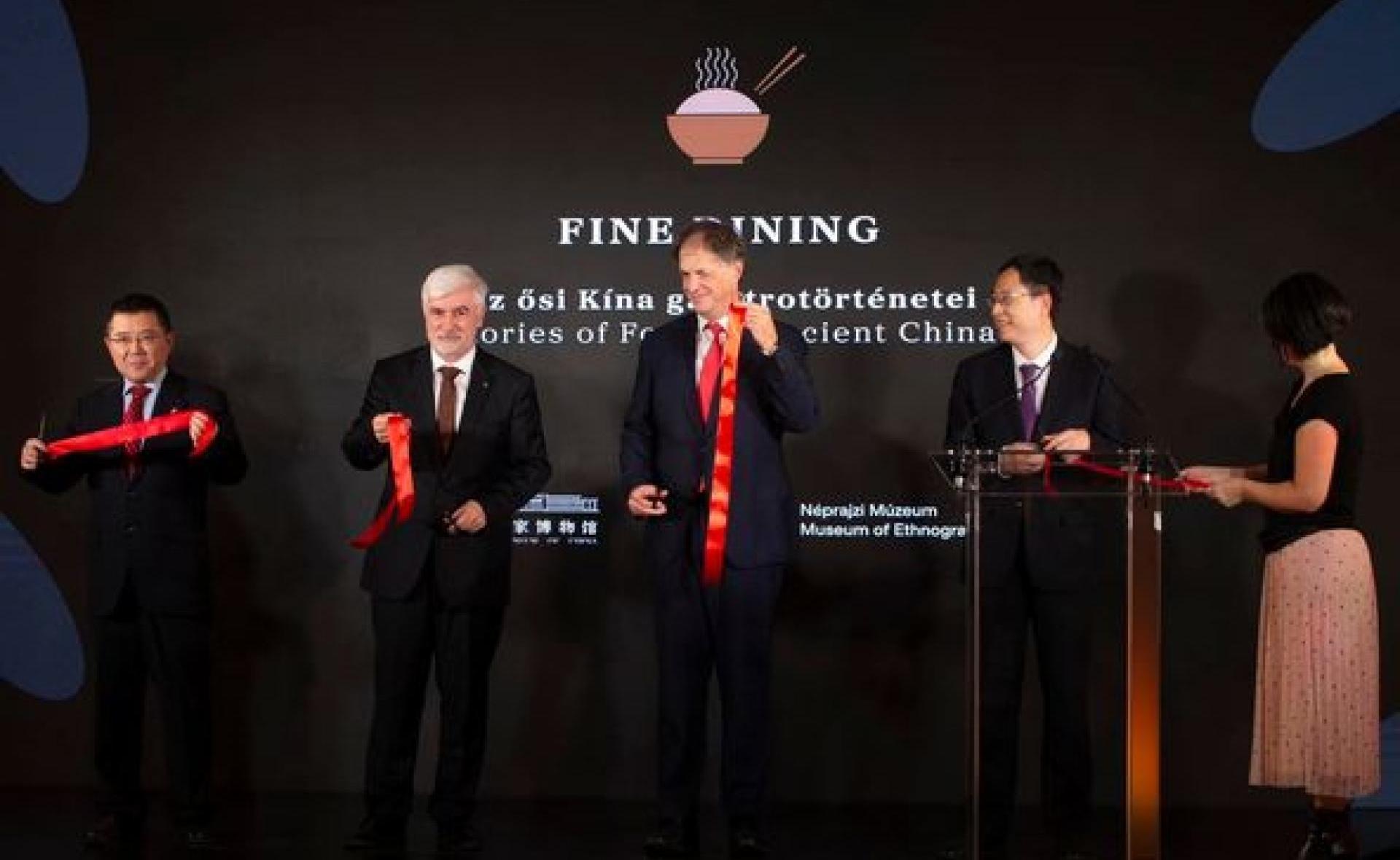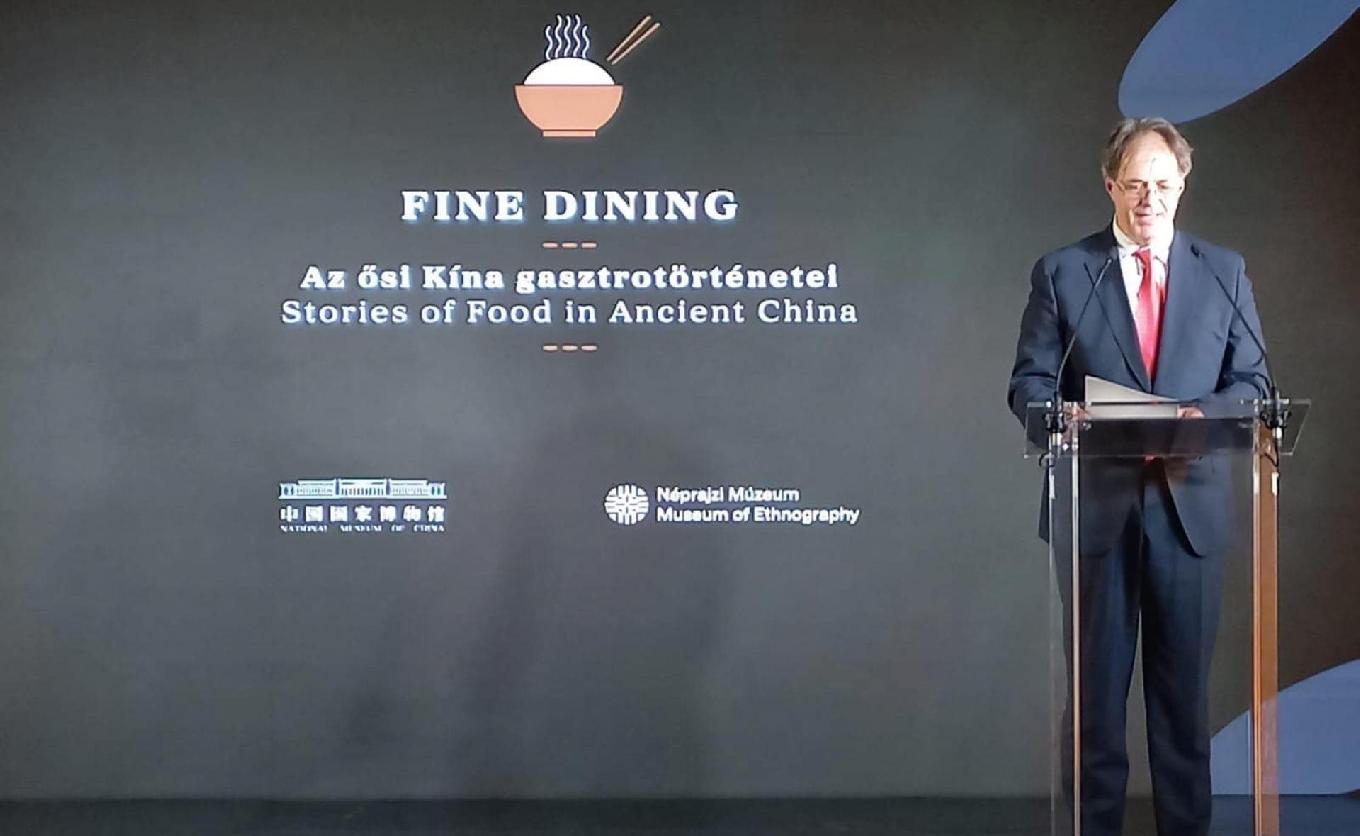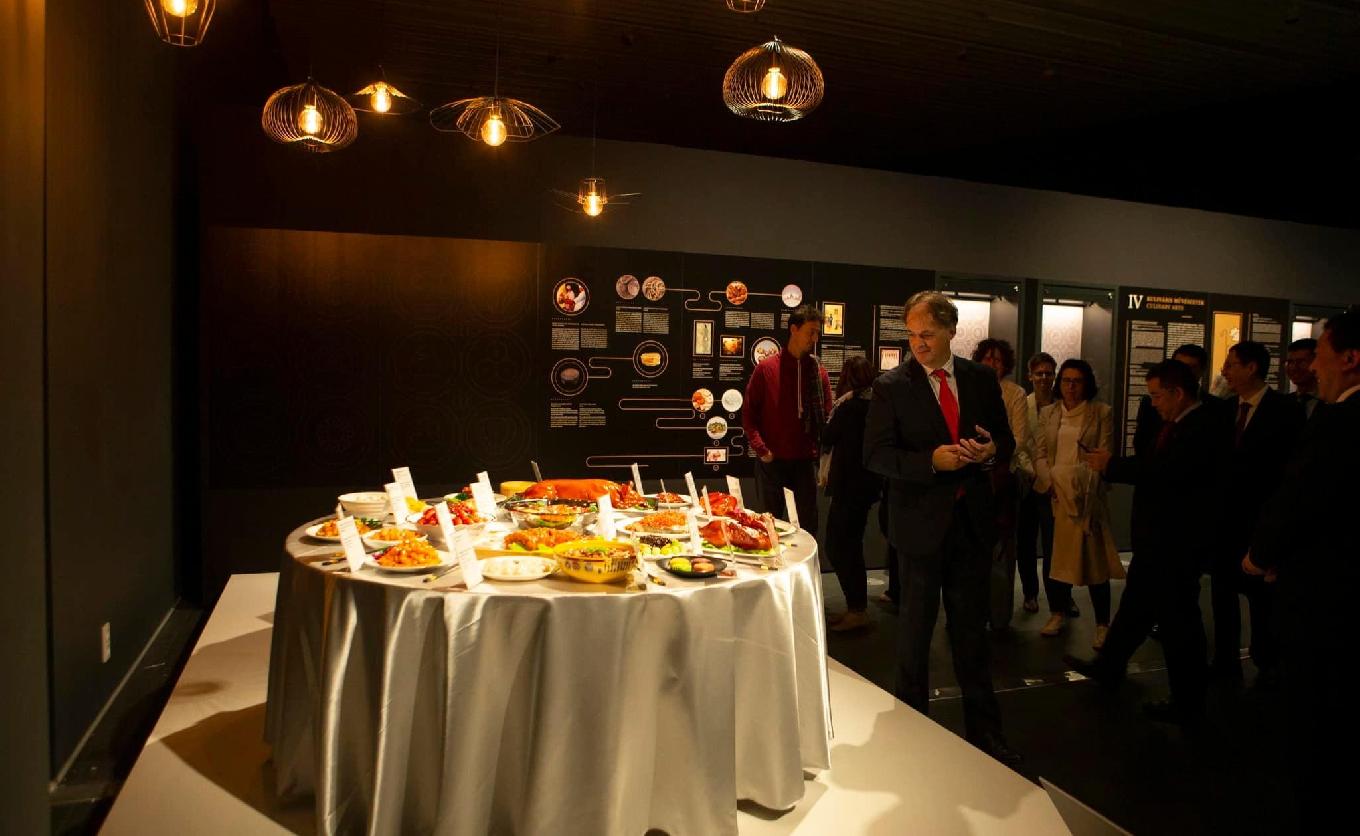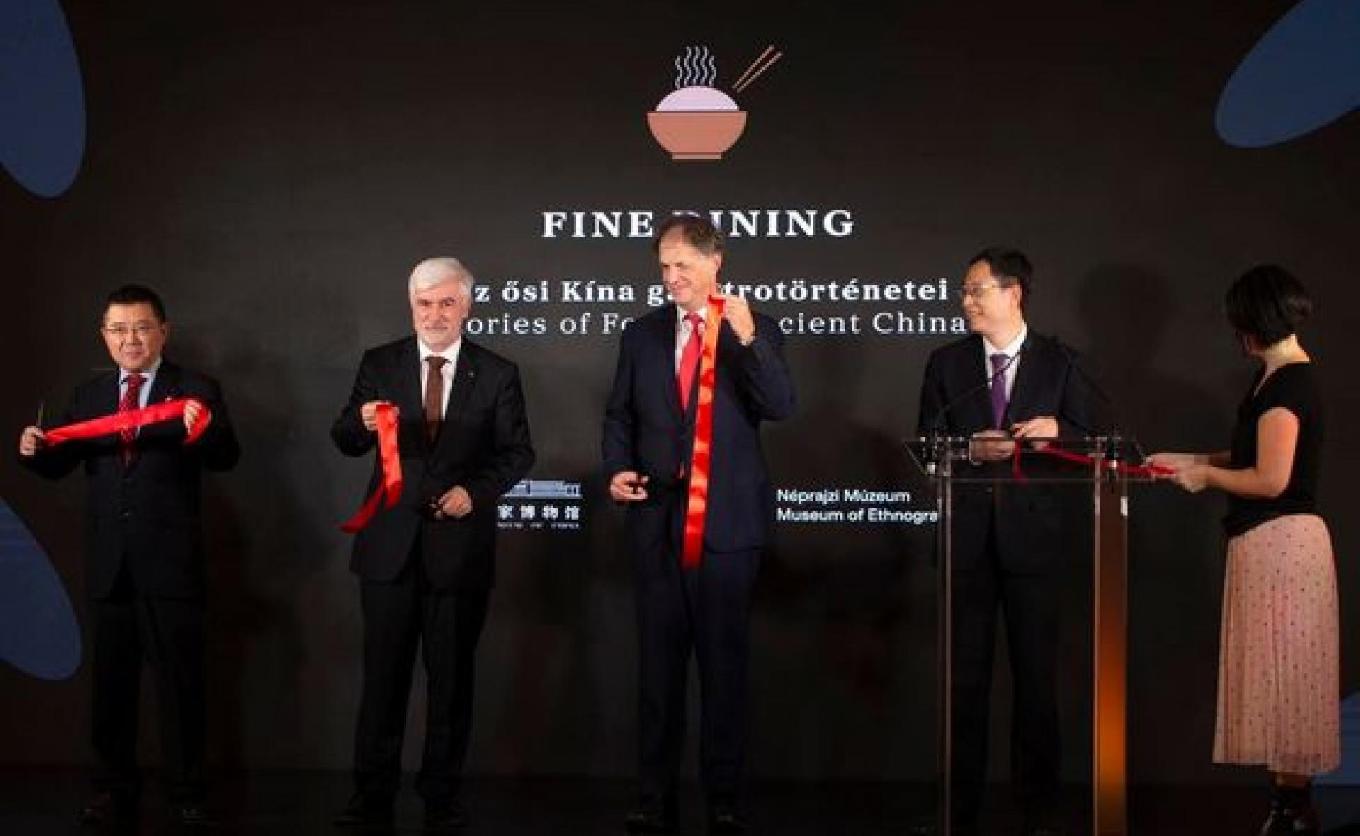
FINE DINING: ANCIENT CHINA GAS THROAT HISTORY EXHIBITION AT THE NÉPRAJZI MUSEUM Photo: MTI/Kocsis Zoltán
Fine Dining: An exhibition titled “The Gastronomic Stories of Ancient China” opened on Tuesday at the Museum of Ethnography in Budapest. This exhibition presents around 90 artifacts from the collection of the National Museum of China, spanning from ancient times to the present. At the opening, Gábor Csaba, the Deputy Secretary of State for Cultural Diplomacy of the Ministry of Culture and Innovation, emphasized the significance of this event for Hungarian-Chinese cultural relations. He noted that it marks a unique opportunity to present a large-scale exhibition highlighting the rich 5,000-year history of Chinese gastronomy and its related material culture in an institution known for housing one of Europe’s most extensive ethnographic and folk art collections.
He highlighted that the exhibition, as a result of collaboration between the museums, illustrates how cultural exchange can foster mutual understanding and respect between nations and peoples of diverse cultures. He pointed out that the exhibition provides insights into the linguistic, philosophical, and spiritual aspects of Chinese gastronomy through its rich collection of artifacts, images, and texts. It emphasizes how our present is deeply rooted in cultural traditions, ancient experiences, and wisdom. He added that the fundamental principles of civilizational dialogue and cultural exchange between Hungary and China—mutual understanding and acceptance—have remained constant for 75 years. Hungary is committed to further enhancing cultural cooperation with China and aims to organize more exhibitions in each other’s countries that reflect the same spirit and standards as this one.
Gong Tao, the Chinese ambassador to Hungary, highlighted that 2024 is a significant year for Chinese-Hungarian relations, marking the 75th anniversary of diplomatic ties and friendship between the two countries. Based on this, we aim to move forward, deepen our understanding of each other, and continue to enhance our relationship by seizing more opportunities for collaboration. He mentioned that during the 75th anniversary of diplomatic relations in May, Chinese President Xi Jinping made a historically significant visit to Hungary. He emphasized that the relationship between the two countries has evolved into a comprehensive and extensive partnership. One of the outcomes of this visit is the exhibition, which further fortifies Hungarian-Chinese relations. He noted that the exhibition showcases various tools used throughout history that highlight food culture, providing insights into the gastronomic heritage of the Chinese nation and everyday life. He pointed out that Hungarians also enjoy Chinese cuisine, as evidenced by the many Chinese restaurants in Budapest. This exhibition, he added, further enhances cultural and gastronomic cooperation, strengthening the friendly ties between the two nations.
As mentioned, the exhibition from China, which has previously visited Liechtenstein, Paris, and Hong Kong, will be on display at its current location until January 19, 2025. During the opening, Yang Fan, Deputy Director of the National Museum of China, and Lajos Kemecsi, Director General of the Museum of Ethnography, discussed the exhibition’s creation and the collaboration between their institutions. Lajos Kemecsi referred to the exhibition as a remarkable highlight in the extensive partnership between the Museum of Ethnography and its Chinese counterparts. He emphasized that, for the Chinese, food and meals carry profound significance; they are not merely about sustenance but also serve to bridge interpersonal challenges and strengthen deep connections. Moreover, food has inspired a rich tapestry of artistic expression in China, encompassing music, dance, painting, sculpture, and poetry. Through the artifacts on display, visitors will have the opportunity to experience the enchanting essence and wisdom of Chinese food culture. Yang Fan elaborated on how guests will gain insights into a culture where the preparation of food and drink transcends basic consumption, embodying spiritual depth. He described food as an art form filled with rich meaning and philosophy, expressing his hope that the audience in Budapest will be captivated by the diversity of Chinese culinary traditions.



